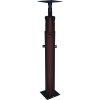In the course of my new Red Sea Reefer 750 (200g total) planning, I was considering adding additional flooring support. I have an evaluation and quote from an experienced contractor I use for other work, but he has never actually done this kind of work for tank support before.
Online the opinions vary quite a bit. One thing that comes up frequently is the recommendation to have a structural engineer give a formal evaluation and recommendation. It seems like planning for a tank has some considerations different from other SE jobs, so I was wondering if any of you have a recommendation for an East Bay Area SE who is familiar with tank flooring issues and is good to work with.
Thanks!
John
Online the opinions vary quite a bit. One thing that comes up frequently is the recommendation to have a structural engineer give a formal evaluation and recommendation. It seems like planning for a tank has some considerations different from other SE jobs, so I was wondering if any of you have a recommendation for an East Bay Area SE who is familiar with tank flooring issues and is good to work with.
Thanks!
John



